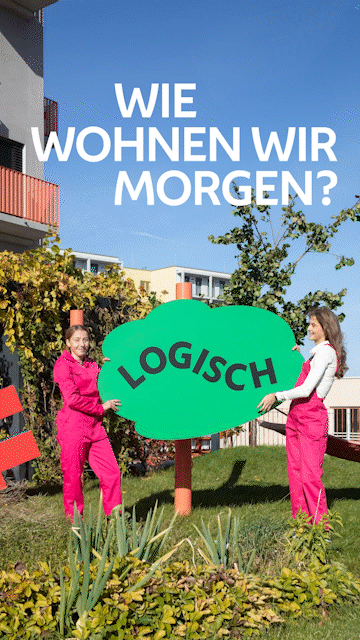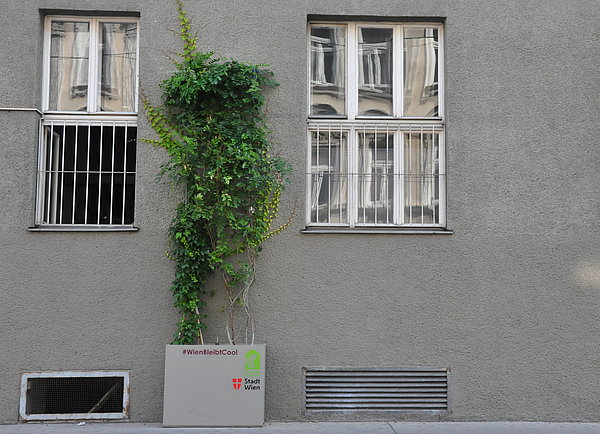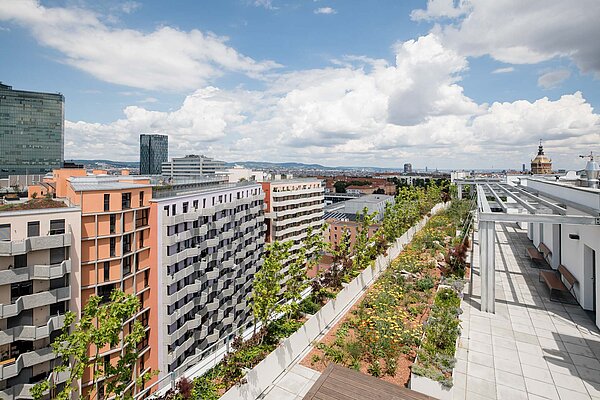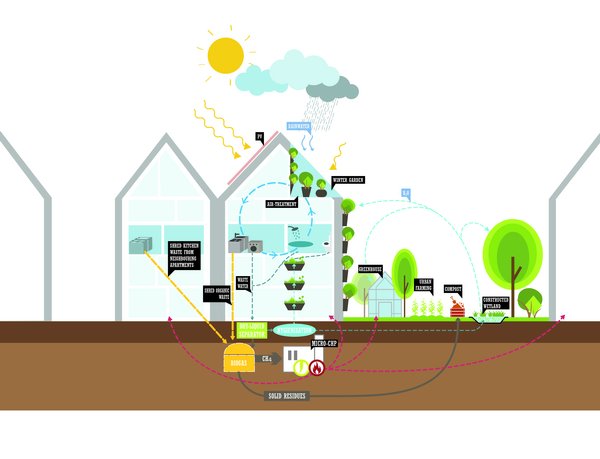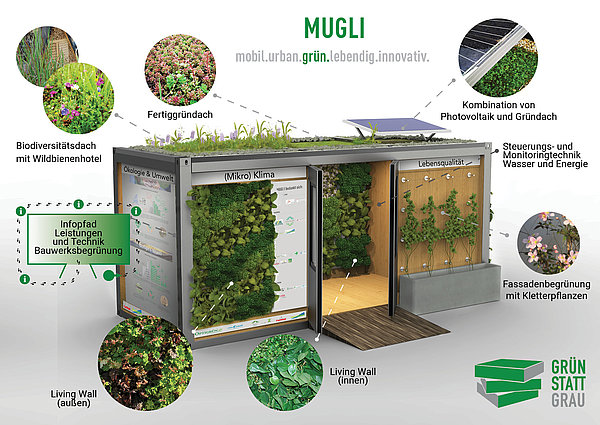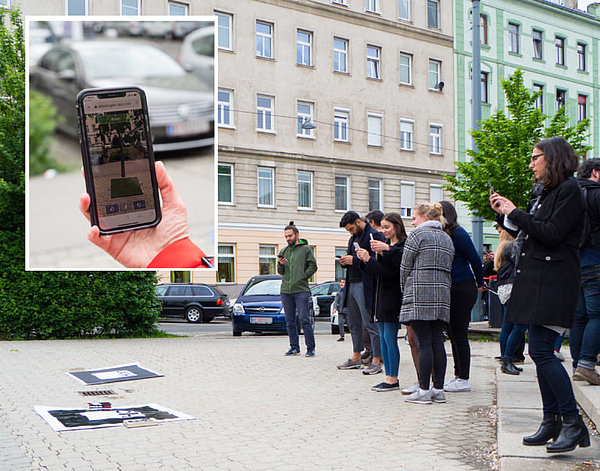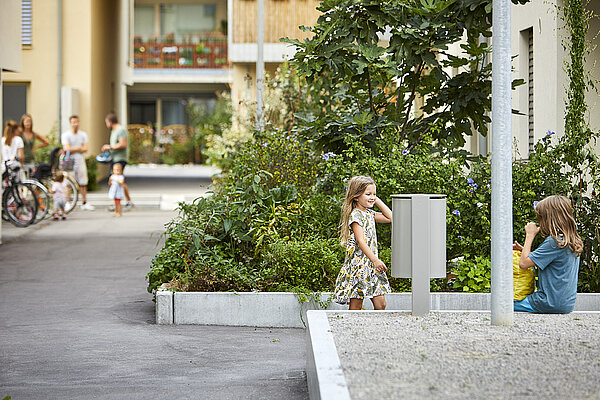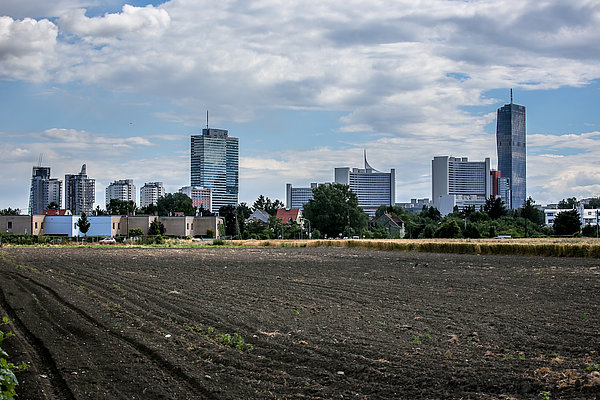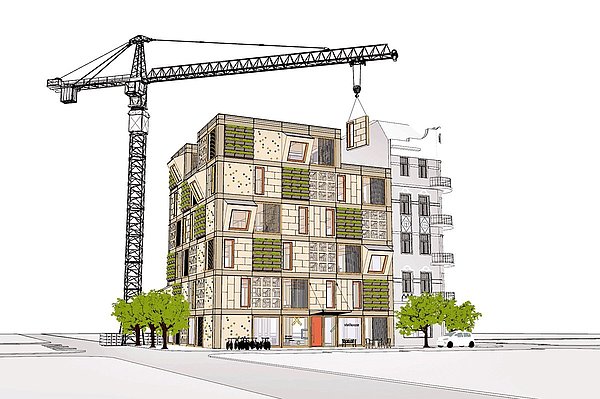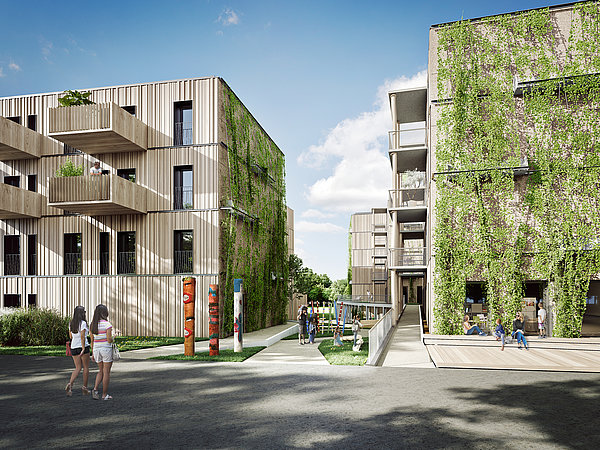Climate adaption & Environmental sustainability
The effects of climate change have not only been researched for a long time, they are also becoming increasingly noticeable for all of us, with the number of heat days (and thus also heat deaths) in summer increasing. Densely built-up urban areas in particular cool down noticeably less at night, and slowly but surely the animal and plant world is also changing.
What to do? On the one hand, we need climate protection that combats the causes of climate change, with environmentally friendly construction methods, circular economy, renewable energy systems and much more. On the other hand, even in achieving climate neutrality, we cannot avoid climate adaptation measures that respond to the inevitable changes: shading, cooling, greening.
Climate change is also a challenge for social housing in the city. This is because there are not only ecological, but also socio-spatial effects. Some neighborhoods and groups of residents are more affected than others. In short, the urban climate is also about issues of equity. It is about making buildings and neighborhoods climate-friendly and providing cool green and open spaces for as many people as possible.
The IBA_Vienna projects have developed constructive contributions to climate protection at all scales, from building greening to sponge cities, from innovative timber construction to circular economy. This is because without answers to the climate question, even the best housing model would not be sustainable.
Examples in the IBA ...
... and beyond
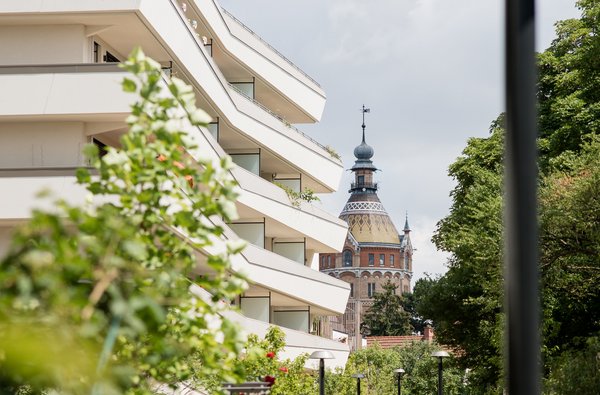
More Innovations & Projects
Many concrete innovations and projects go beyond the period of the IBA_Vienna and represent important impulses for the further development of the mentioned thematic field.Click on the arrow above the image to learn more!

NAWAROS
Straw, sheep’s wool, flax or cellulose are not only ecological insulating materials, but they also create a significantly improved living climate.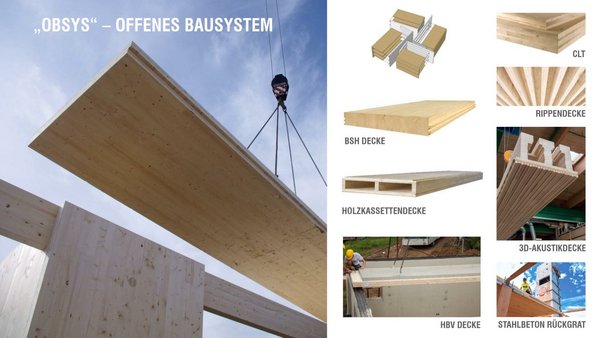
1st Vienna Housing TREE Program
The aim of the 1st Vienna Housing TREE Program is to gather experience in reducing CO2 emissions in the building sector.
GREENPASS®
GREENPASS® provides architects, developers and authorities with a digital tool for climate-optimized planning.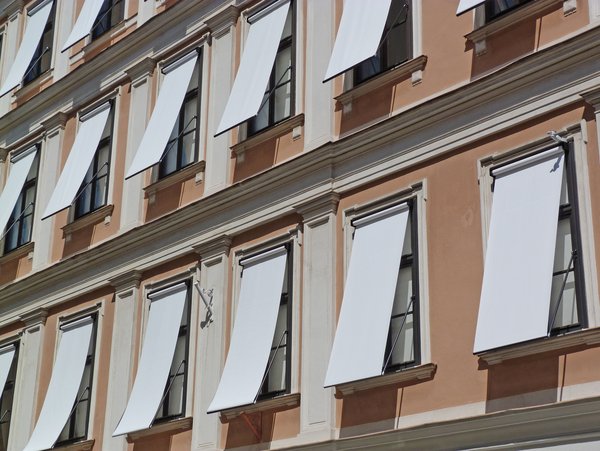
Shading measures
Since 2019, the City of Vienna has been awarding subsidies for the installation of sun protection devices in multi-story residential buildings.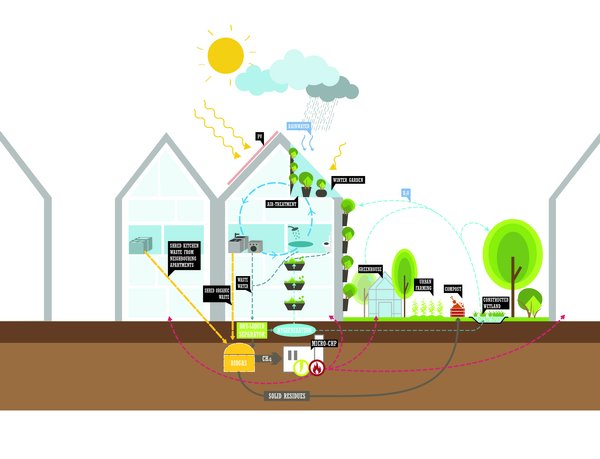
Circular Economy
Since 2022, the City of Vienna has had its own staff unit for Resource Conservation and Sustainability in the Construction Industry.